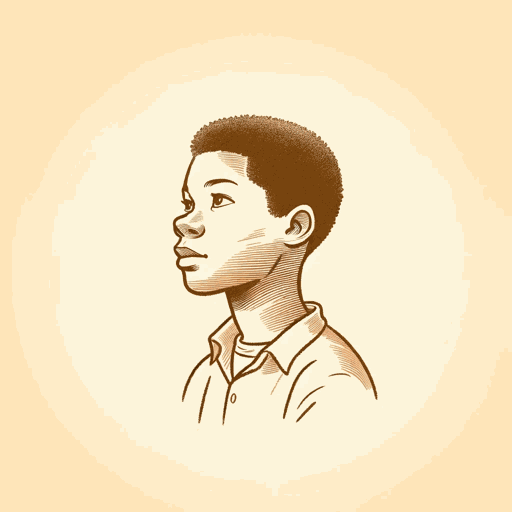24 pages • 48 minutes read
Langston HughesSlave on the Block
Fiction | Short Story | Adult | Published in 1933A modern alternative to SparkNotes and CliffsNotes, SuperSummary offers high-quality Study Guides with detailed chapter summaries and analysis of major themes, characters, and more.
Literary Devices
Point of View
The narration in the short story “Slave on the Block” uses a third-person point of view and largely a free indirect style, a form of narration that doesn’t distinguish the story from a character’s (or characters’) thoughts or experience of its events. In addition to the free indirect style, however, Hughes uses omniscient and direct styles.
When Hughes writes, “Leave them unspoiled and just enjoy them, Michael and Anne felt” (Paragraph 1), the point of view is third person and omniscient: The narrator has access to the thoughts and feelings of multiple characters. When Hughes writes, “Anne said” (Paragraph 30), the point of view is third person and direct: Hughes then presents Anne’s dialogue directly, from an objective viewpoint, using dialog tags. When Hughes writes, “Of course Covarrubias wasn’t a Negro, but how he caught the darky spirit!” (Paragraph 2), he’s using free indirect style: The joint viewpoint of the Carraways is indistinguishable from the narration, the narrator isn’t explicit through a dialog tag (such as “Michael and Anne felt”), and the diction reflects the two characters’ breathless and clueless voices.
Hughes uses these points of view to paint a fuller picture of the distinction between the experiences of the white characters and the Black characters.
Related Titles
By Langston Hughes

Children’s Rhymes
Langston Hughes

Cora Unashamed
Langston Hughes

Dreams
Langston Hughes

Harlem
Langston Hughes

I look at the world
Langston Hughes

I, Too
Langston Hughes

Let America Be America Again
Langston Hughes

Me and the Mule
Langston Hughes

Mother to Son
Langston Hughes

Mulatto
Langston Hughes

Mule Bone: A Comedy of Negro Life
Langston Hughes, Zora Neale Hurston

Not Without Laughter
Langston Hughes

Thank You, M'am
Langston Hughes

The Big Sea
Langston Hughes

Theme for English B
Langston Hughes

The Negro Artist and the Racial Mountain
Langston Hughes

The Negro Speaks of Rivers
Langston Hughes

The Ways of White Folks
Langston Hughes

The Weary Blues
Langston Hughes

Tired
Langston Hughes
Featured Collections
A Black Lives Matter Reading List
View Collection
African American Literature
View Collection
Black History Month Reads
View Collection
Books on Justice & Injustice
View Collection
Civil Rights & Jim Crow
View Collection
Contemporary Books on Social Justice
View Collection
Historical Fiction
View Collection
Pride & Shame
View Collection
Psychological Fiction
View Collection
Realistic Fiction (High School)
View Collection

